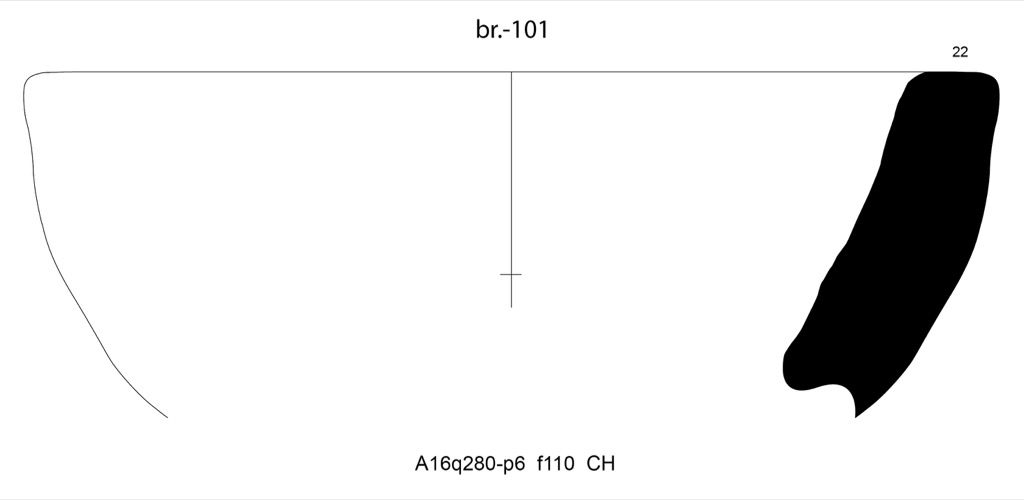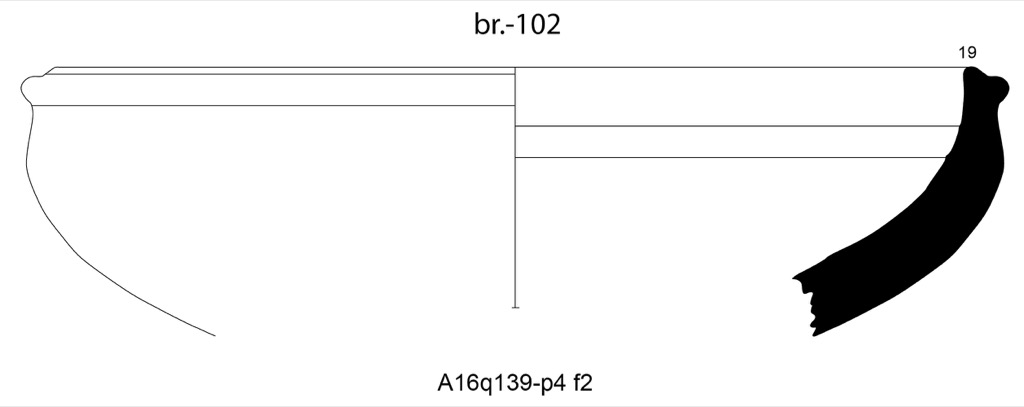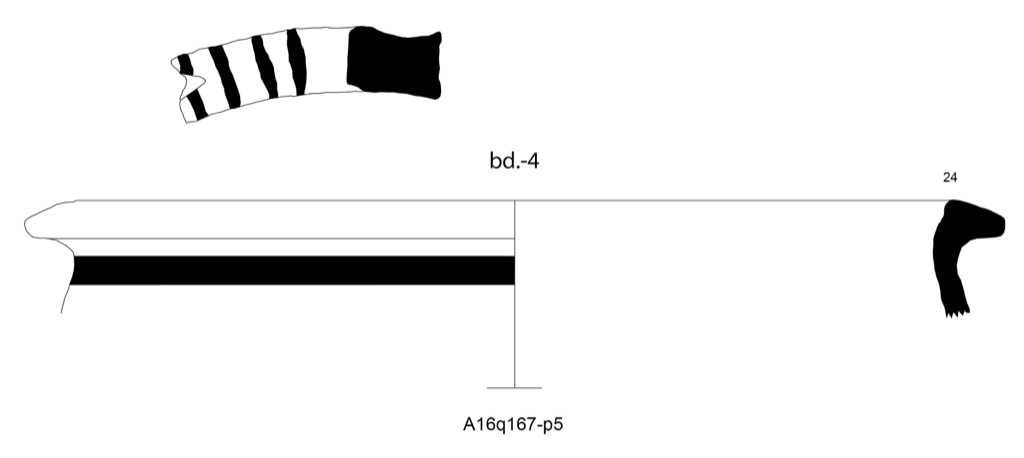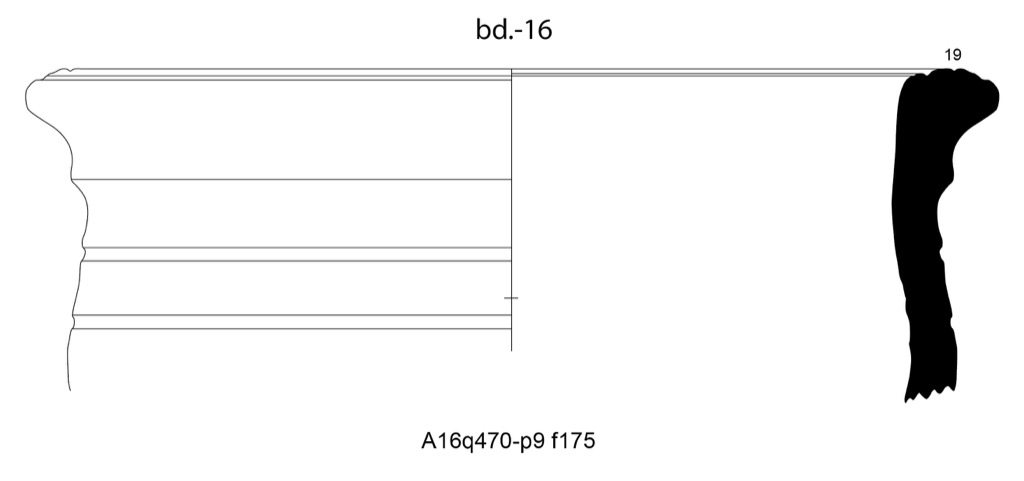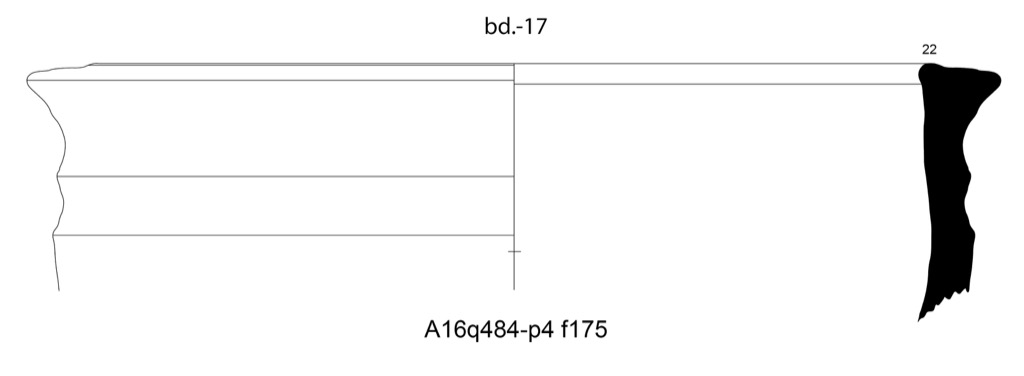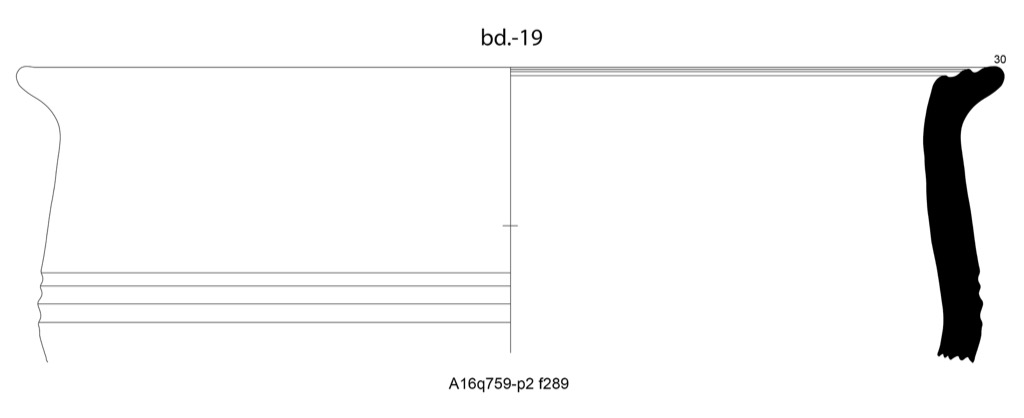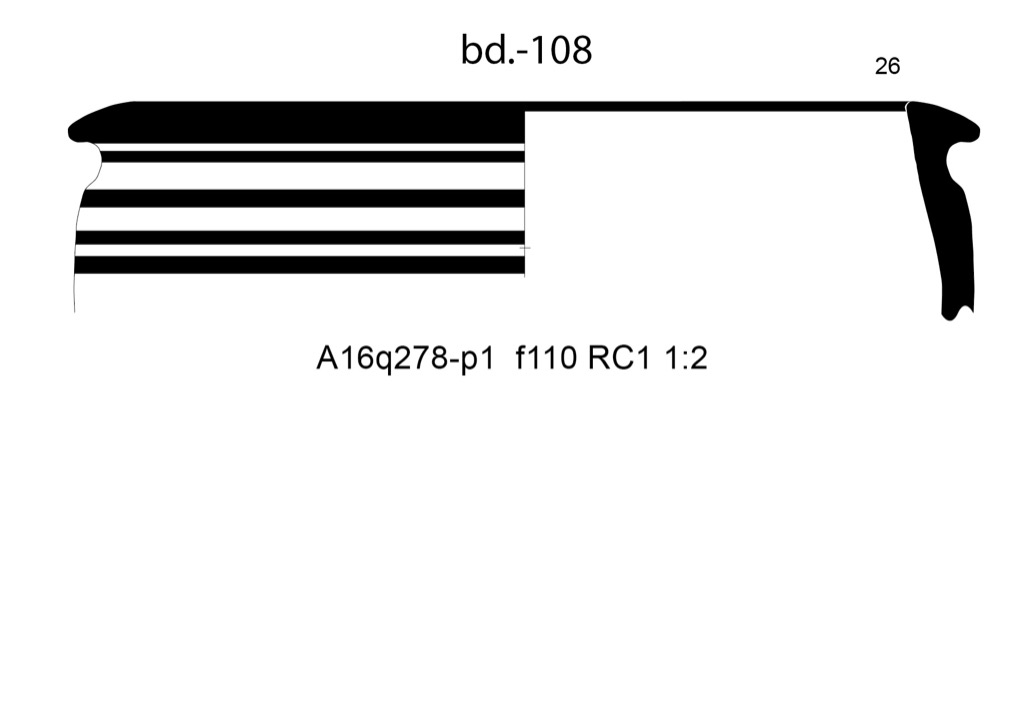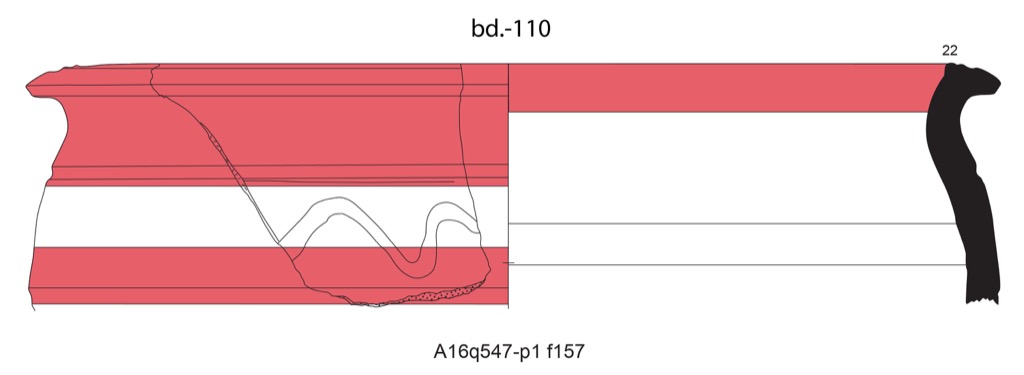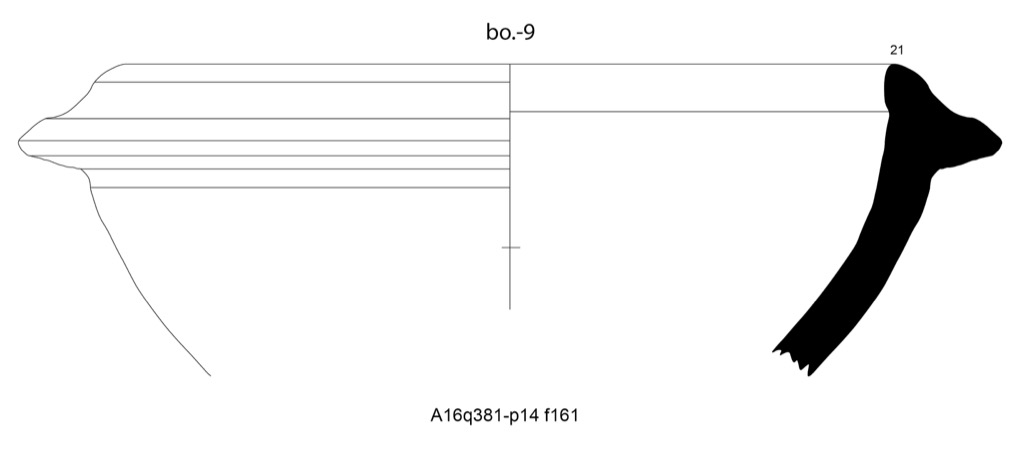Back to top: Bowls
Brief Overview
The definition of what is a bowl is the same for all units and all time periods in the UGR. See https://urkesh.org/mz/a/ceramics/texts/a2/shapes-main.htmhere for further details. Khabur period ceramics were found in the excavations of A11, A13 and A16, some tombs and a number of pottery kilns excavated in A15 (see also Lorenzo Crescioli’s MA thesis). Because of these limited contexts there are relative few Khabur period ceramics found in the excavations. The Plaza context where there was a large amount of Mittani pottery did not contain Khabur ceramics although it did yield ceramics painted in Khabur-type decoration bands which were still being produced in the Mittani period.
The prevailing bowl type is a carinated bowl while now few round profile bowls being produced. Deep bowls tend to have a wide groove just under the rim which would have made tying a lid on easier.
Bowl rims can be painted with parallel vertical lines in groups. Both carinated bowls and deep bowls are often decorated with solid bands on the upper body. Large painted dots are a carryover from the previous period and are rare. Ribbed decoration does occur in this period but this type of decoration is not common. They are however common on Gray ware bowls made in this period; see here for further details.
Back to top: Bowls
Carinated Bowls
Back to top: Bowls
Carinated bowls with round carination
| bcrr8 | 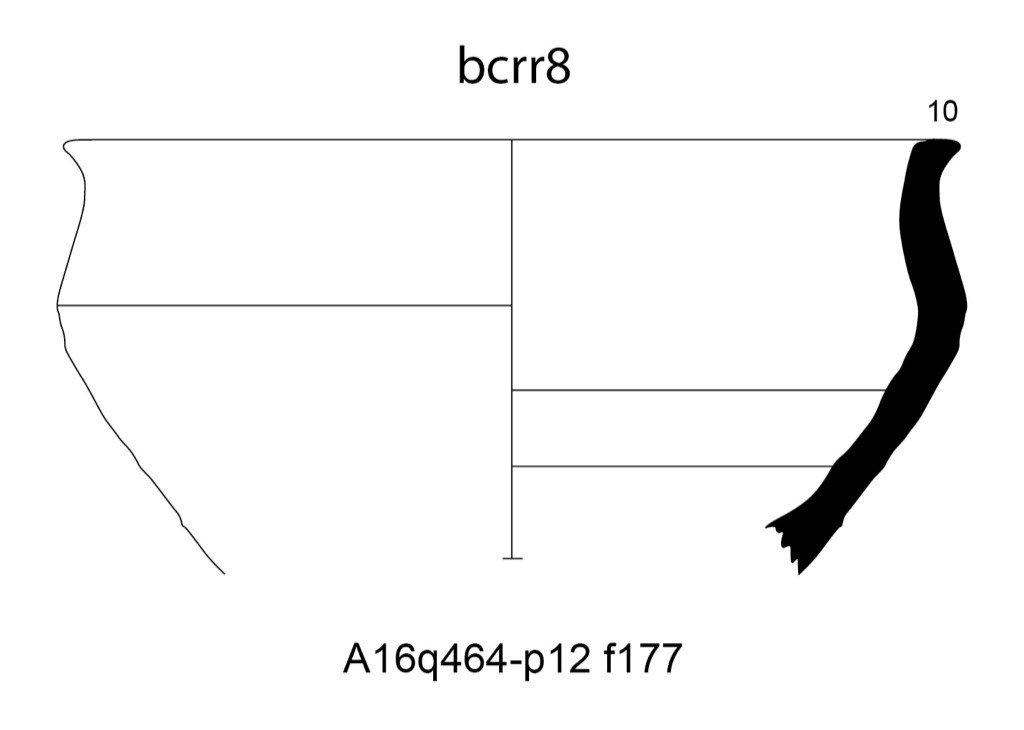
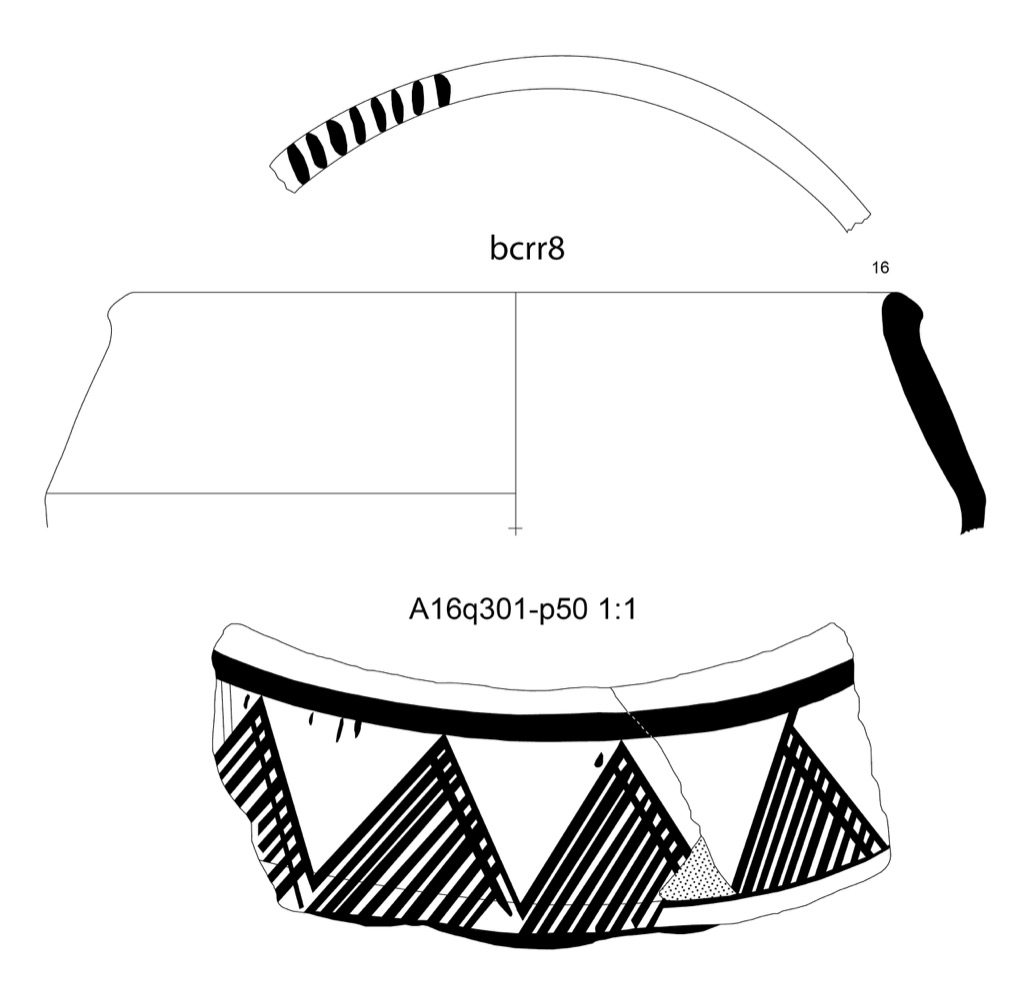 |
| bcrr9 | 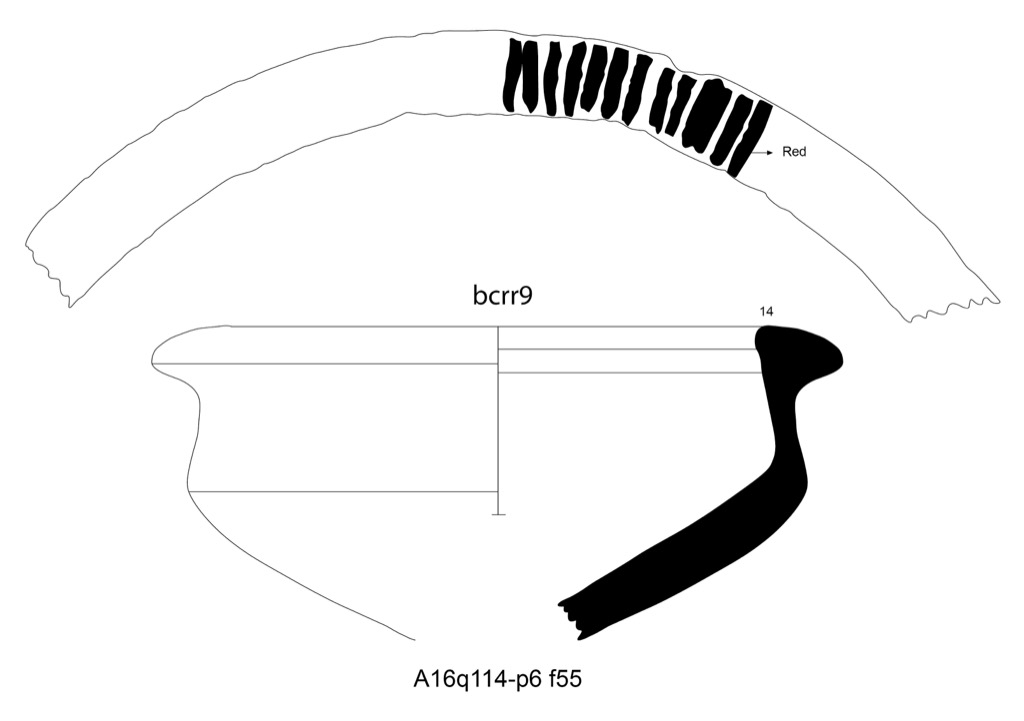 |
| bcrr106 | 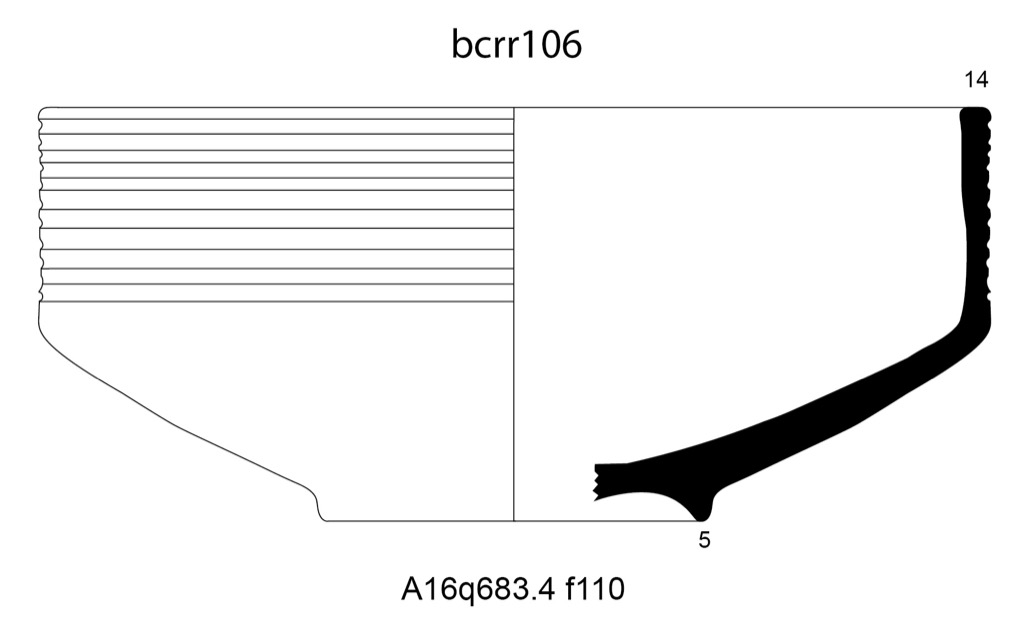 |
Back to top: Bowls
Carinated bowls with sharp carination
| bcrsa1 | 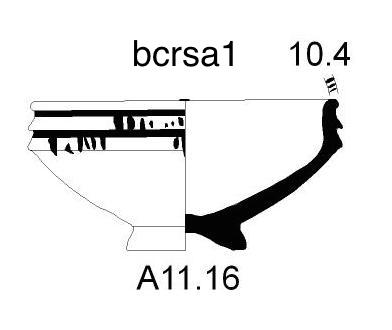
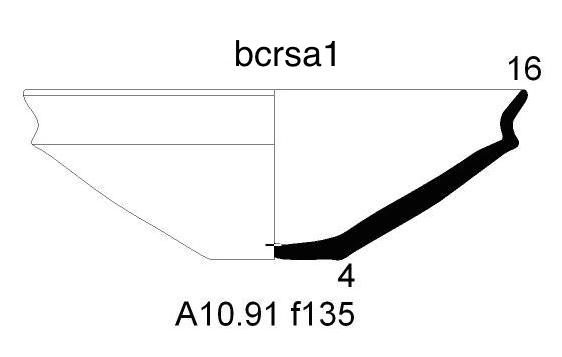 |
| bcrsa2 | 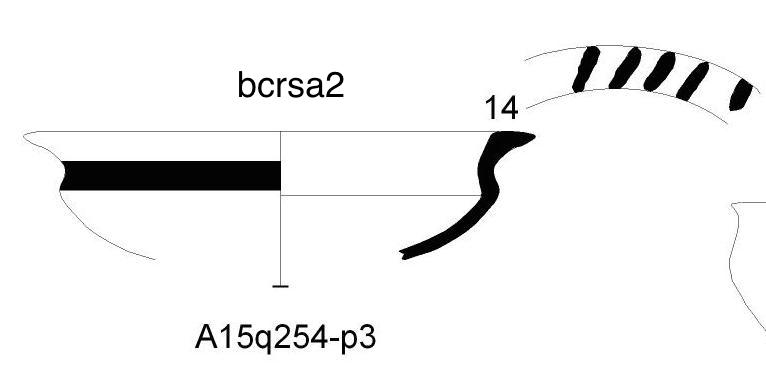
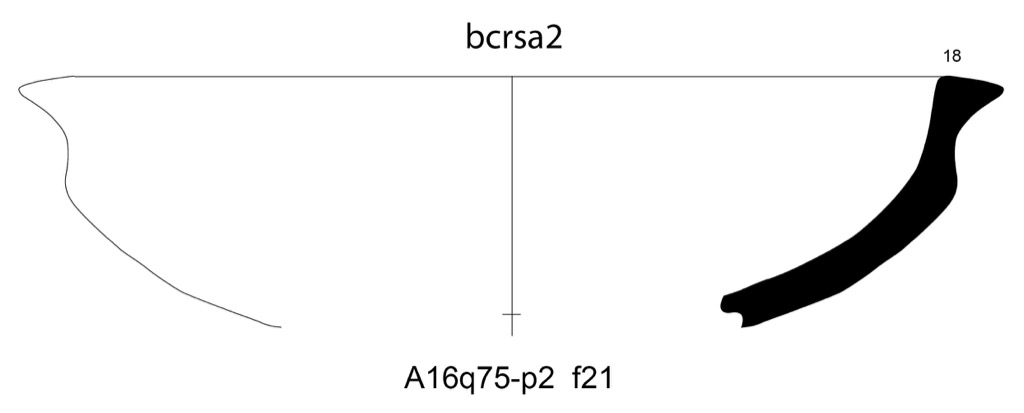
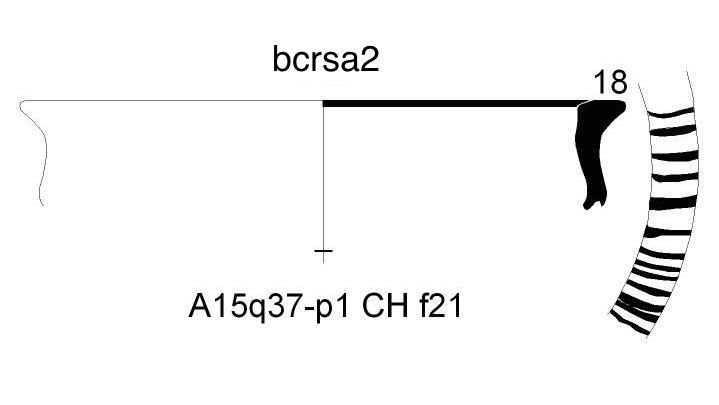
 |
| bcrsa3 | 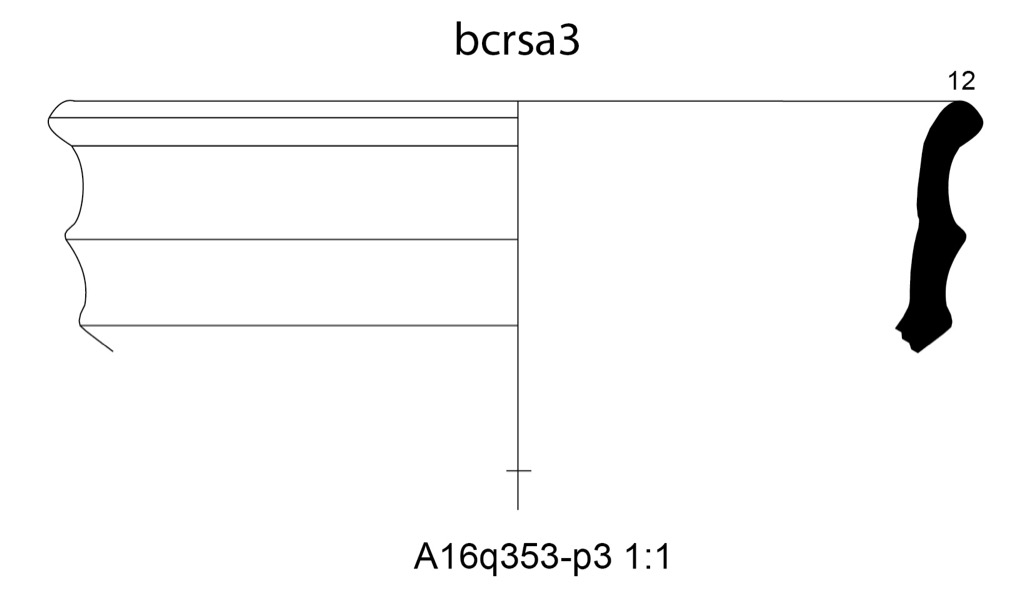
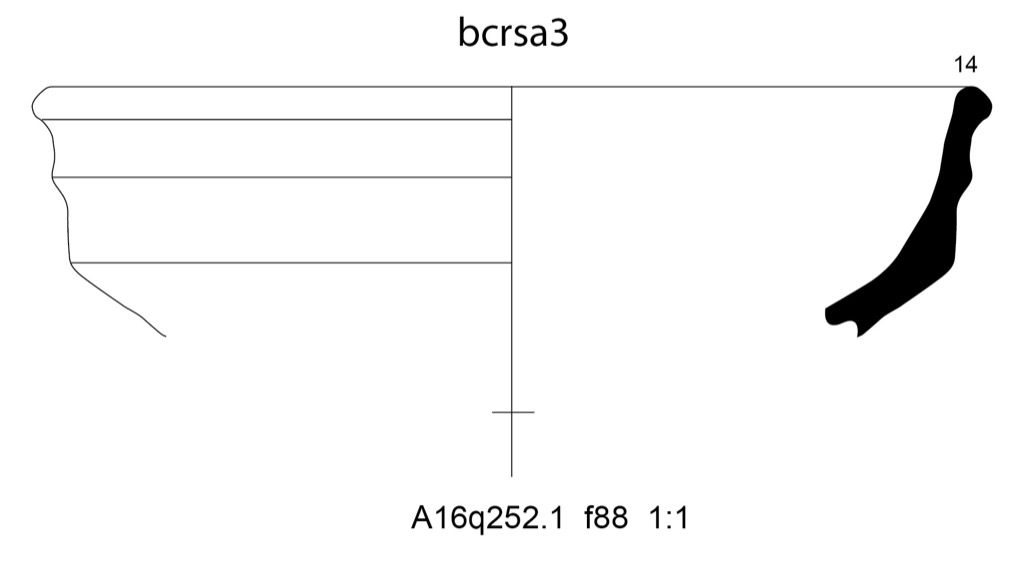 |
| bcrsa11 | 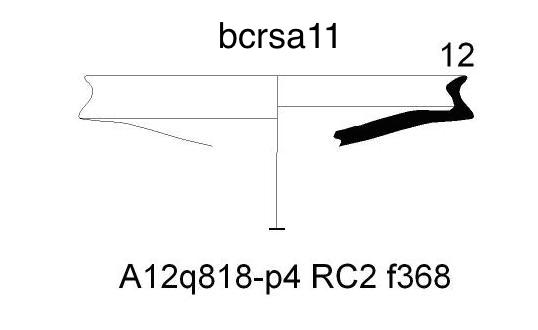 |
| bcrsa102 |  |
Back to top: Bowls

